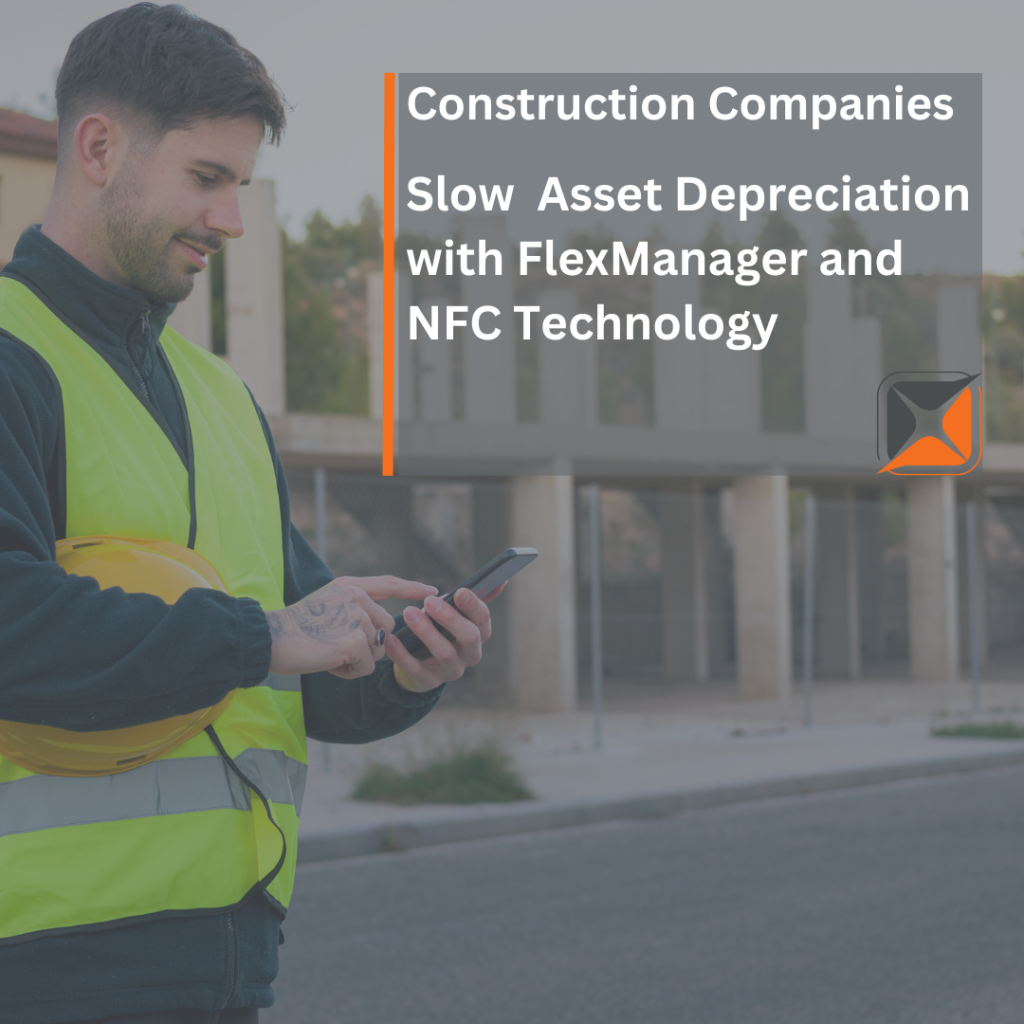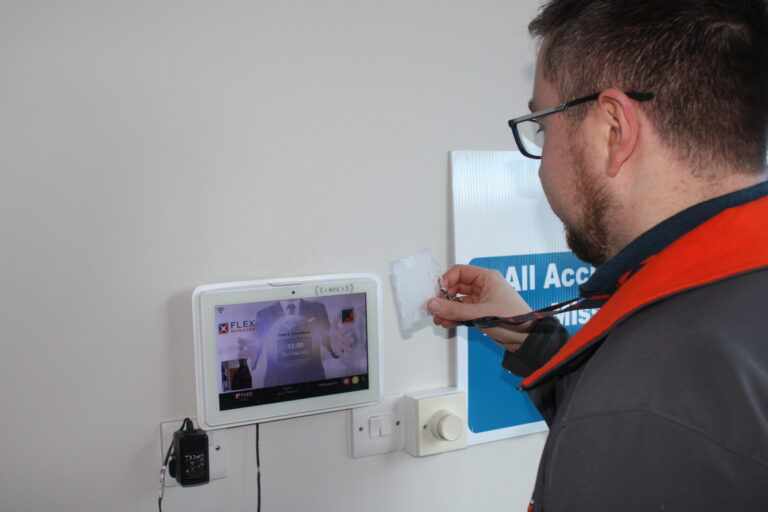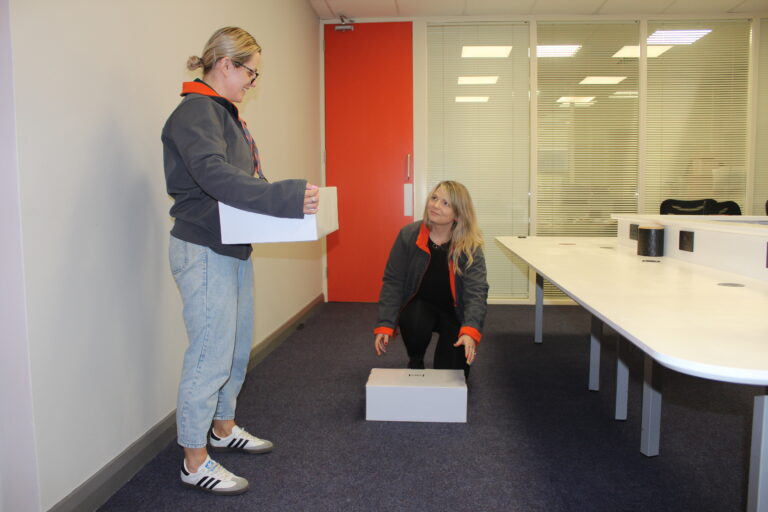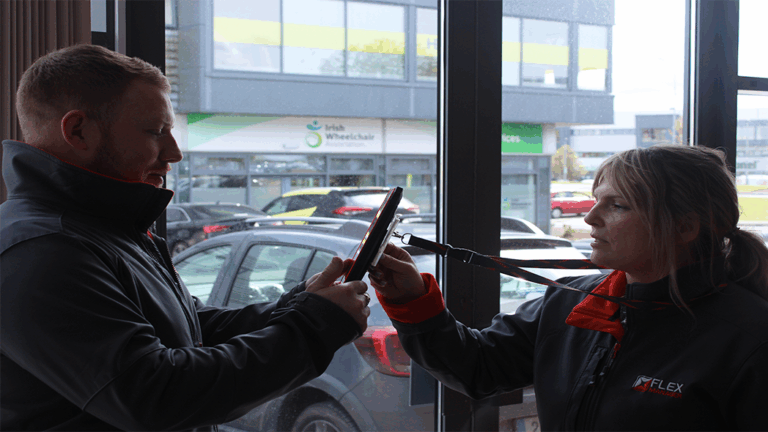
If you have ever used your phone for contactless payments, then you are familiar with NFC Technology. Short for ‘Near Field Communication,’ it has become a part of our daily lives through services like Google and Apple Pay. However, its applications extend far beyond payments. For instance, did you know that when used with FlexManager, NFC tags can assist in the maintenance and value management of your organisation’s machinery and equipment.
What Are NFC Tags?
Near Field Communication (NFC) is a wireless technology that enables data transfer between two NFC-enabled devices. Its common uses include mobile payments, access control, and data sharing. NFC operates in two modes: Peer-to-Peer and Read/Write.
In Peer-to-Peer mode, two NFC-enabled devices directly exchange data, such as when two phones share a file by tapping together. In Read/Write mode, an NFC-enabled device reads or writes data on an NFC tag.
NFC tags are passive devices that interact with an NFC-enabled device when they are in close proximity. This is the type of NFC technology utilised by FlexManager to manage on-site equipment.
It is used by FlexManager as a convenient and secure method for data exchange between devices, without the need for complex setup or pairing processes. NFC is widely supported by modern smartphones and is user-friendly. Unlike some other technologies, NFC does not rely on internet connectivity, making it a viable option in areas with limited connectivity.
5 Ways FlexManager Uses NFC Tech To Maintain Asset Value
You may be asking how NFC can help your construction company manage its assets. Below, we examine how our dynamic software combines with this tech to help maintain the value of your assets.
1. Provides Asset Tracking
NFC tags can be attached to machinery to create a digital record for each asset. Staff members can then scan these tags with an NFC-enabled device to access information about the machinery or equipment. This information may include maintenance history, user manuals, and troubleshooting guides. Asset tracking helps monitor the machinery’s lifecycle, servicing requirements, and maintenance history.
2. Provides a Convenient and User-Friendly System
NFC Technology can ensure that each piece of equipment is safe for use, by prompting checks.
For example, a construction company using hazardous machinery can use NFC to conveniently transfer data by tapping tags on each piece of equipment after conducting the necessary safety checks. This simplifies the data transfer process. In cases where required checks are not performed, FlexManager can also notify relevant parties to take corrective action.
3. Ensures Secure Access Control
NFC can also be utilised for access control, ensuring that only authorised personnel can use the machinery. Authorised individuals simply need to tap their NFC card or device on a reader to gain access.
4. Gives Real-time In-field Data
NFC enables real-time data transport from the field, providing details about which machinery is being used, who is using it, and its current condition. This prevents double-booking and enhances accountability.
5. Offers Link Documentation
NFC tags can be used to link digital documentation, such as manuals and safety procedures, to equipment. This helps promote correct use, reduce breakages, and provide troubleshooting insights for users.
Save Money With NFC & FlexManager
When used with FlexManager, NFC tags eliminate the need for manual data entry and complex setup processes. They are also user friendly, create accountability, and can link in with documents and guides that can eliminate misuse.
More importantly, FlexManager uses this technology to help your organisation save money in the long run. It does this by creating a culture of compliance around assets, where the correct checks and maintenance controls are in place and are followed and linked back to the user who connects the two NFC devices.
If you would like to hear more, click the button below to get a free demo of FlexManager and find out how we can help you.












